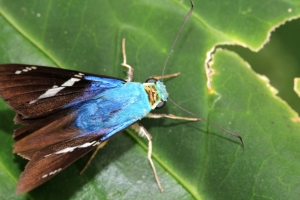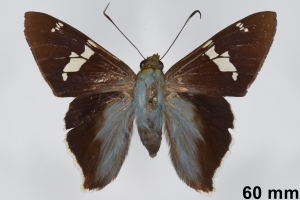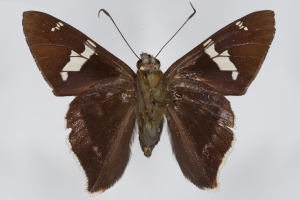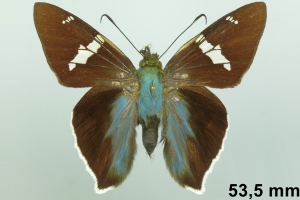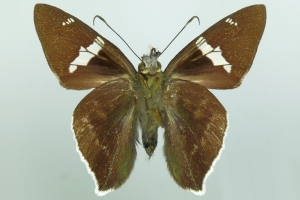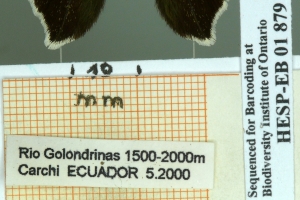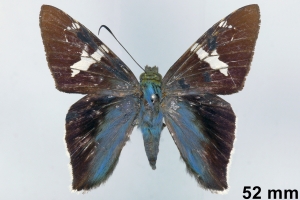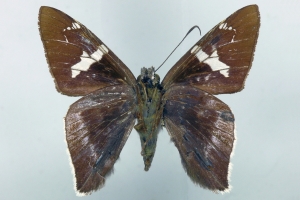

 +2Kontinente:SA
+2Kontinente:SA2. Diagnose
2.1. Männchen
3. Weitere Informationen
3.1. Andere Kombinationen
- Ridens philistus ssp. philia Evans, 1952 [Originalkombination]
3.2. Taxonomie und Faunistik
Evans(1952: 82) beschrieb das Taxon als "Ridens philistus ssp. philia" (Typenfundort "Colombia, Cauca, Juntas"), das er von "Ridens philistus ssp. philistus" unterschied. Dem wurde allgemein gefolgt, so dass z.B. die Meldungen auf [Global Biodiversity Information Facility] (Stand 13. Oktober 2025) beide Taxa umfassen.
Erst Zhang et al. (2025: 68) klärten auf, dass Evans' "Ridens philistus ssp. philistus" gar nicht mit Hopffers "Eudamus philistus" identisch war, sondern eine noch unbeschriebene Art meinte: Ridens ankon Grishin, 2025. Sie erläutern unter der Überschrift "Ridens philia Evans, 1952 is a species distinct from Ridens philistus (Hopffer, 1874)": "Genomic analysis reveals that the lectotype of Ridens philistus (Hopffer, 1874) (type locality Peru: Junín, Chanchamayo) is in a different clade from Ridens philistus philia Evans, 1952 (type locality in Colombia: Cauca), and therefore these two taxa are distinct species (Fig. 5). Hence, we propose that Ridens philia Evans, 1952, new status, is a species-level taxon. The origin of Evans’ (1952) mistake is the misidentification of R. philistus, which is a tailed species, but Evans assumed it was tailless due to its drawings depicting a tailless butterfly, possibly the damaged syntype (missing both tails, designated as the lectotype above). The species that Evans identified as R. philistus does not have a name and is new, described next. [...]". R. philia ist nach derzeitiger Kenntnis nur von Kolumbien und Ecuador bekannt.
(Autor: Erwin Rennwald)
3.3. Literatur
- Erstbeschreibung: Evans, W. H. (1952): A Catalogue of the American Hesperiidae indicating the classification and nomenclature adopted in the British Museum (Natural History). Part II (Groups B, C, D) Pyrginae. Section 1: i-v, 1-178, pl. 10-25. — Digitalisat auf biodiversitylibrary.org: [82]
- Hopffer, C. (1874): Neue Lepidopteren von Peru und Bolivia. — Entomologische Zeitung 35 (10-12): 329-371. — Digitalisat auf biodiversitylibrary.org: [367]
- Erstbeschreibung: Zhang, J., Cong, Q., Shen, J., Song, L. & N.V. Grishin (2025): Descriptions of three hundred new species of Hesperiidae (Lepidoptera: Papilionoidea). — Insecta Mundi, 1148: 1–369. doi.org/10.64338/im.1148.2704t. [zur open-access-Arbeit mit PDF-Download]
3.4. Informationen auf anderen Websites (externe Links)
- [Global Biodiversity Information Facility] [pro parte!]



